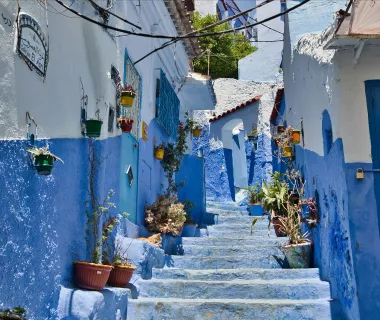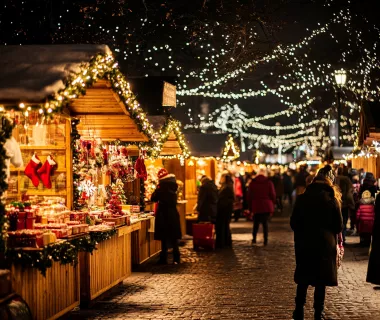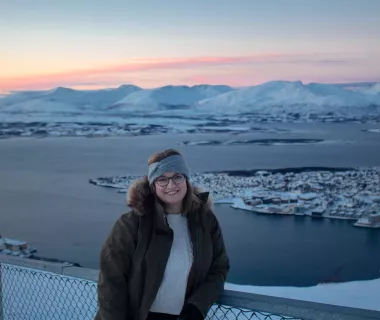Morocco is a country rich in history, culture, and stunning landscapes. From the royal cities with their medinas and kasbahs to the Atlas Mountains, the desert, and breathtaking waterfalls, there’s so much to explore. While iconic destinations like Marrakesh and Chefchaouen attract many visitors, it’s well worth venturing into other parts of the country. With a rental car, you can effortlessly travel between Morocco’s diverse regions. To help you get started, we’ve created three unique routes, each highlighting a different area of Morocco. Let the adventure begin!
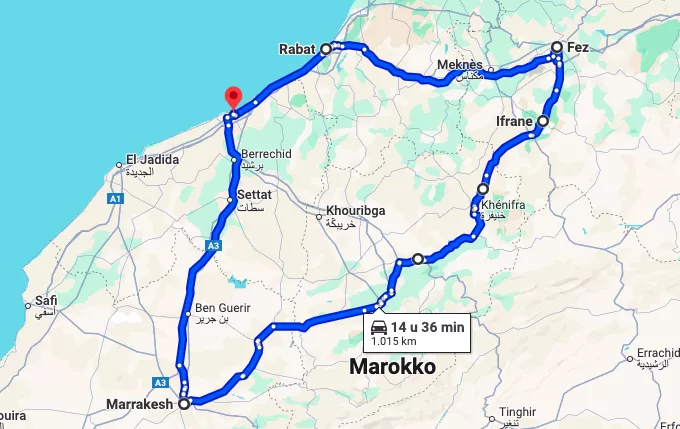
The Royal Cities and Atlas Mountains
Start and end in: Casablanca
Route: Casablanca → Rabat → Meknès → Fez → Middle Atlas → Marrakesh → Casablanca
- Day 1-2: Start your journey in Casablanca, known for its modern charm. Visit the iconic Hassan II Mosque or stroll through the Art Deco streets.
- Day 3: Pick up your rental car and head to Rabat, the historic capital. Explore the Royal Palace, Hassan Tower, and the Kasbah of the Udayas.
- Day 4: Drive to Meknès, one of Morocco’s Royal cities with beautiful medinas, and visit the nearby Roman ruins of Volubilis.
- Day 5-6: Discover Fez, famous for its rich history. Wander through its narrow streets and authentic medina.
- Day 7: Travel through the Middle Atlas, stopping in Ifrane, known as the “Switzerland of Morocco,” and Azrou, where you can spot monkeys in the cedar forest.
- Day 8-9: The last stop is in Marrakesh. Explore Jemaa el-Fnaa square, the Majorelle Garden, and the vibrant souks.
- Day 10: Return to Casablanca to drop off your rental car.
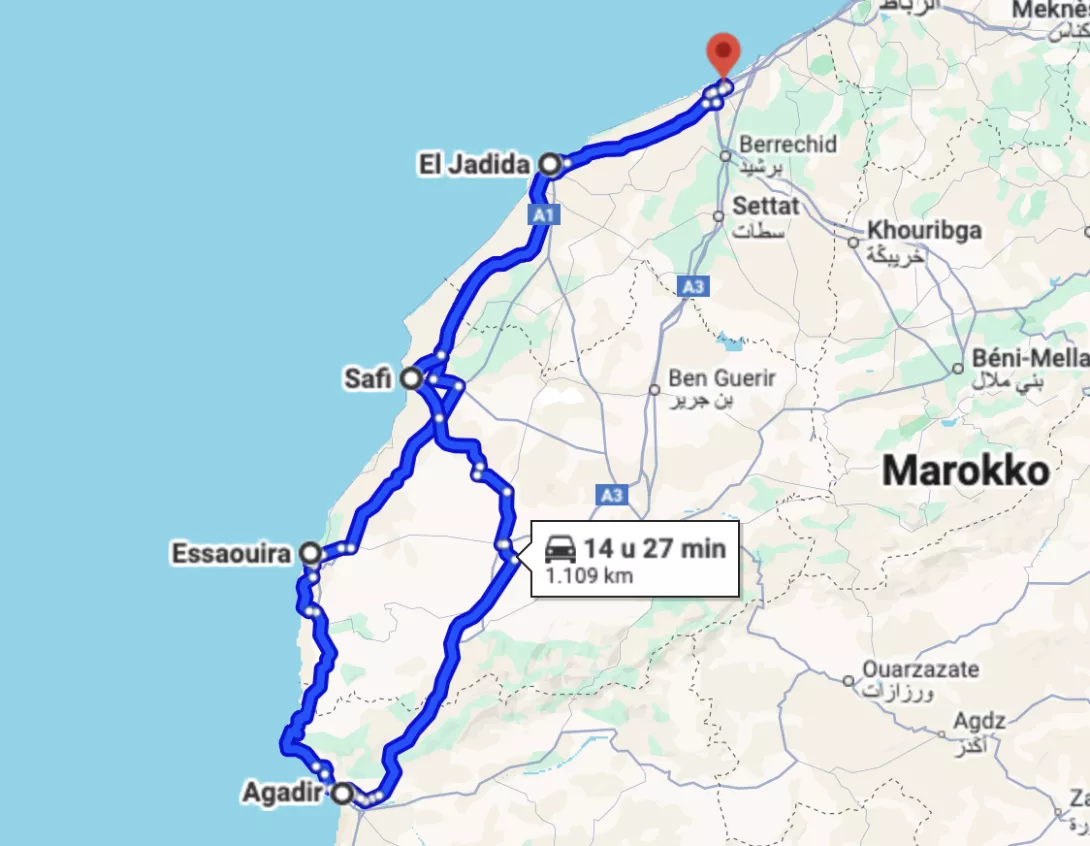
Along the Atlantic Coast
Start and end in: Casablanca
Route: Casablanca → El Jadida → Essaouira → Agadir → Safi → Casablanca
- Day 1-2: Start off in Casablanca, Morocco’s modern metropolis. Visit the Hassan II Mosque, the Casablanca Cathedral, and the Arab League Park.
- Day 3: Pick up your car and drive to El Jadida, a port city blending Moroccan and European influences. Walk along the city walls or visit the underground Portuguese Cistern.
- Day 4-5: Continue to Essaouira, a charming coastal town. Stroll through the harbor, explore the medina, or ride horses on the beach.
- Day 6-7: Head to Agadir, known for its lively beachfront and vibrant promenade. Relax on the beach or savor local cuisine at waterfront restaurants.
- Day 8: On your way back to Casablanca, stop in Safi, famous for its pottery. Visit Potters’ Hill to see artisans at work.
- Day 9: Drive back to Casablanca along the stunning coastline.
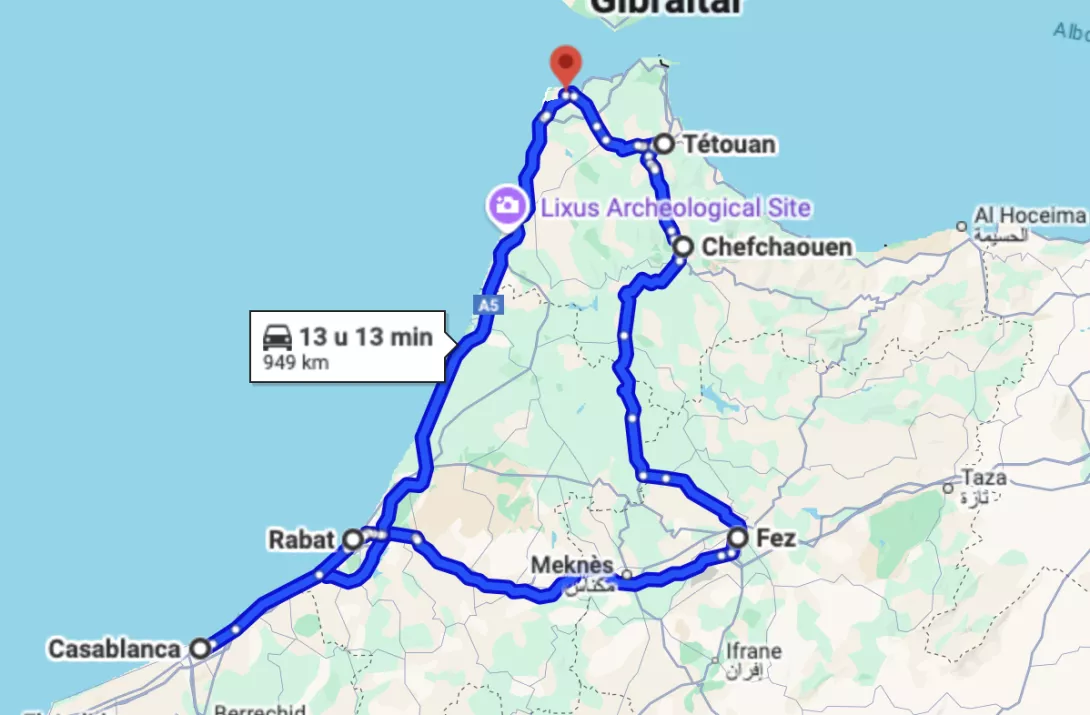
Northern Morocco
Start and end in: Tangier
Route: Tangier → Tétouan → Chefchaouen → Fez → Casablanca → Rabat → Tangier
- Day 1-2: Start your journey in Tangier. Explore its historic center, visit the Kasbah, or visit the Caves of Hercules.
- Day 3: Pick up your rental car and drive to Tétouan, a UNESCO World Heritage city. Discover its old medina and the surrounding kasbah.
- Day 4-5: Head to Chefchaouen, the famous blue city in the Rif Mountains. Browse local shops or hike to the Akchour Waterfalls.
- Day 6-7: Continue to Fez, Morocco’s oldest imperial city. Walk through the Bab Bou Jeloud gate, explore the medina, and visit the famous tanneries.
- Day 8-9: Drive to Casablanca. Explore local markets, medinas, and the world-renowned Hassan II Mosque.
- Day 10: Visit Rabat, Morocco’s capital. Stroll through Andalusian Gardens, visit the ancient city of Chellah, or unwind on the beach.
- Day 11: Return to Tangier and drop off your rental car.
Frequently Asked Questions About Renting a Car in Morocco
- Do I need an international driver’s license to rent a car in Morocco?
No, your regular Dutch driver’s license is valid in Morocco, including for car rentals. - Are the roads in Morocco safe to drive on?
Major roads and highways are generally well-maintained. However, exercise caution in mountainous areas and on unpaved roads. If you plan to explore the mountains, a 4x4 vehicle is recommended. Avoid driving at night due to limited street lighting and potential obstacles on the road. - What about toll roads in Morocco?
Morocco has a network of toll roads that are safe and well-maintained. Costs are relatively low and can be paid in cash. While some toll booths accept credit cards, this isn’t guaranteed, so keep small change handy. - How are the gas stations in Morocco?
Gas stations are widely available along highways, major roads, and in cities, with reliable chains like Afriquia, Shell, and Total offering modern facilities. In remote or mountainous areas, stations are less frequent, so fill up in advance. Cash payments are common, so carry enough dirhams for your trip.





